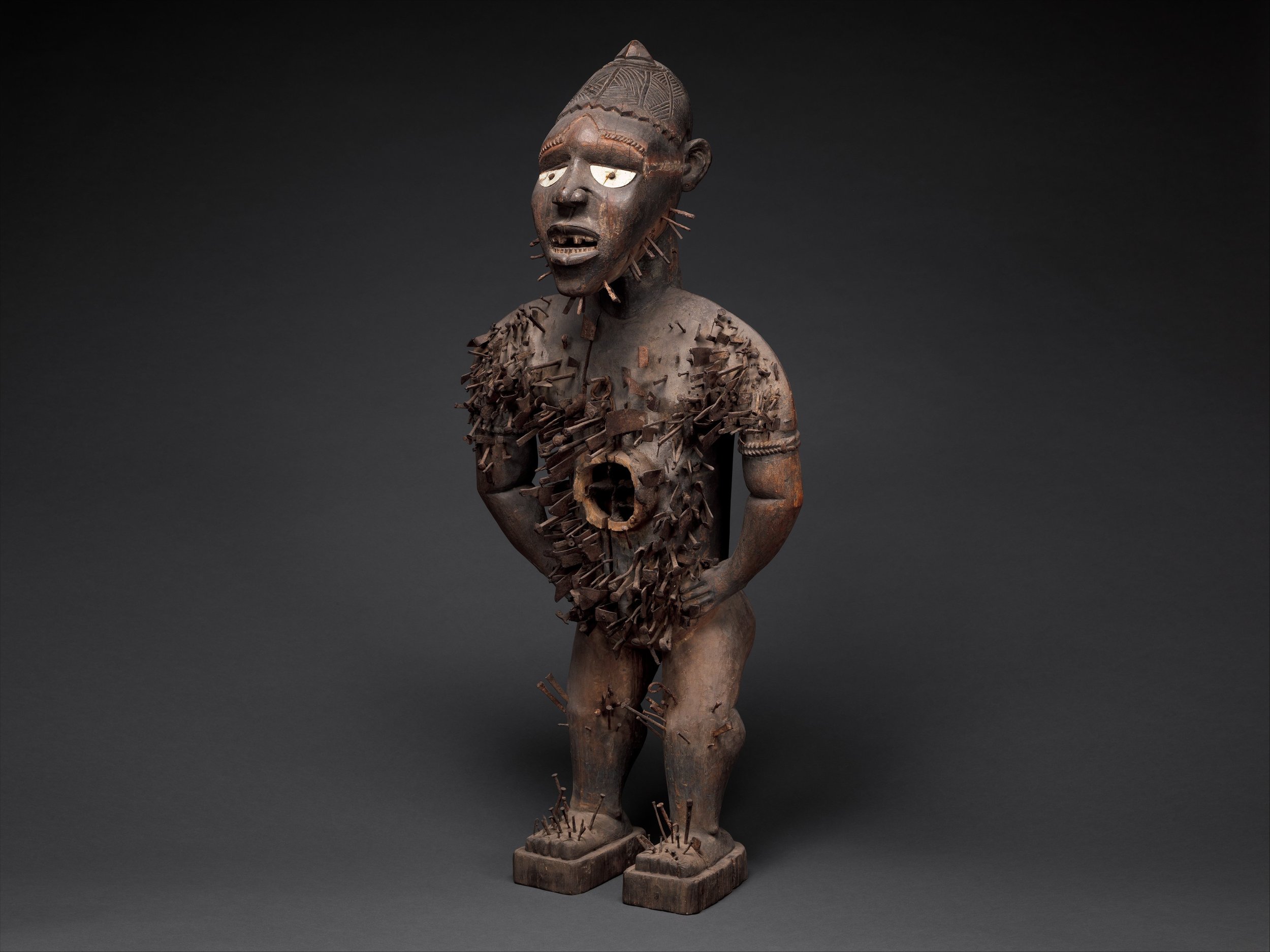Nkisi Nkondi (Power Figure)
Nkisi Nkondi (Power Figure), Kingdom of Louango, late 19th century, Wood and Metal, Republic of the Congo
The Nkisi Nkondi, often known as the Power Figure, serves as a spiritual object with diverse applications. It plays several roles in modern Africa, including healing clients, recording contracts, and pursuing wrongdoers. Found in Southwest Africa, namely D.R. Congo and Republic of the Congo, these figures have held an essential role in Louango culture dating back to the 15th century when Portuguese missionaries attempted to burn the Nkisis on suspicion of witchcraft.
Functionally, the Nkisi is a spirit that is handled by a ritual specialist known as the Nganga. This specialist uses the Nkisi to heal clients using a unique combination of herbs known as Bilongo, which are placed into the Mooyo, the box on the belly of the figure. After the Nganga commissions a sculptor to create the object, the Nganga is the only person who has the authority to utilize the Power Figure in the manner it is supposed to be used.
In its role as a tool for solidifying contractual agreements, the Nkisi unites the two parties to discuss the terms of their contract; after having reached an agreement, the Nganga drives a nail, as shown above, into the Nkisi, which finalizes the contract. These figures may be used for decades on end, resulting in dozens of nails being driven into the power figure. Furthermore, each nail is an indicator of a specific agreement, meaning that the Nganga must remember exactly what agreement each nail signifies, emphasizing how important the Nganga is to the function of the Nkisi. As a result, the Nkisi unintentionally functions as a continuous document of the history of those who sought help from a spiritual specialist. The power figure has shown to hold a significant role in maintaining law and order in African societies. In situations where the Nganga has been requested to go after an evil doer, they might put a sharp object, such as a tooth from an animal that can do harm, as opposed to a nail to activate the Nkisi. The act of driving an object into the Power Figure prompts the figure to do its bidding.
Clients seeking physical or emotional healing from the Nkisi traditionally bring money or items to trade in exchange for treatment. The Nganga initiates the healing process by inserting the Bilongo into the Mooyo. The medicine is so intense, that one would not sell the figure to a museum or a collector without removing the Bilongo from the Mooyo; as such, many Nkisi found in museums have a broken Mooyo.
A great example of how this figure has influenced popular culture is how Hollywood morphed the Power Figure into an object that fits into American society. Soon after these figures began being displayed in Museums across the world, Hollywood created an offshoot of the Nkisi known as the Voodoo doll. These figures hold significant spiritual significance to some cultures in the western hemisphere, illustrating the transnational influence of African Culture.
